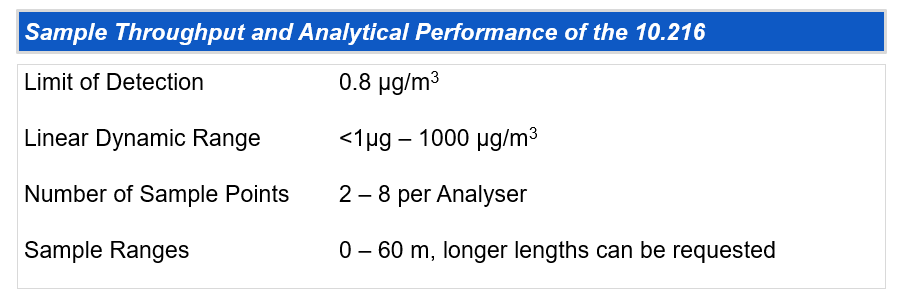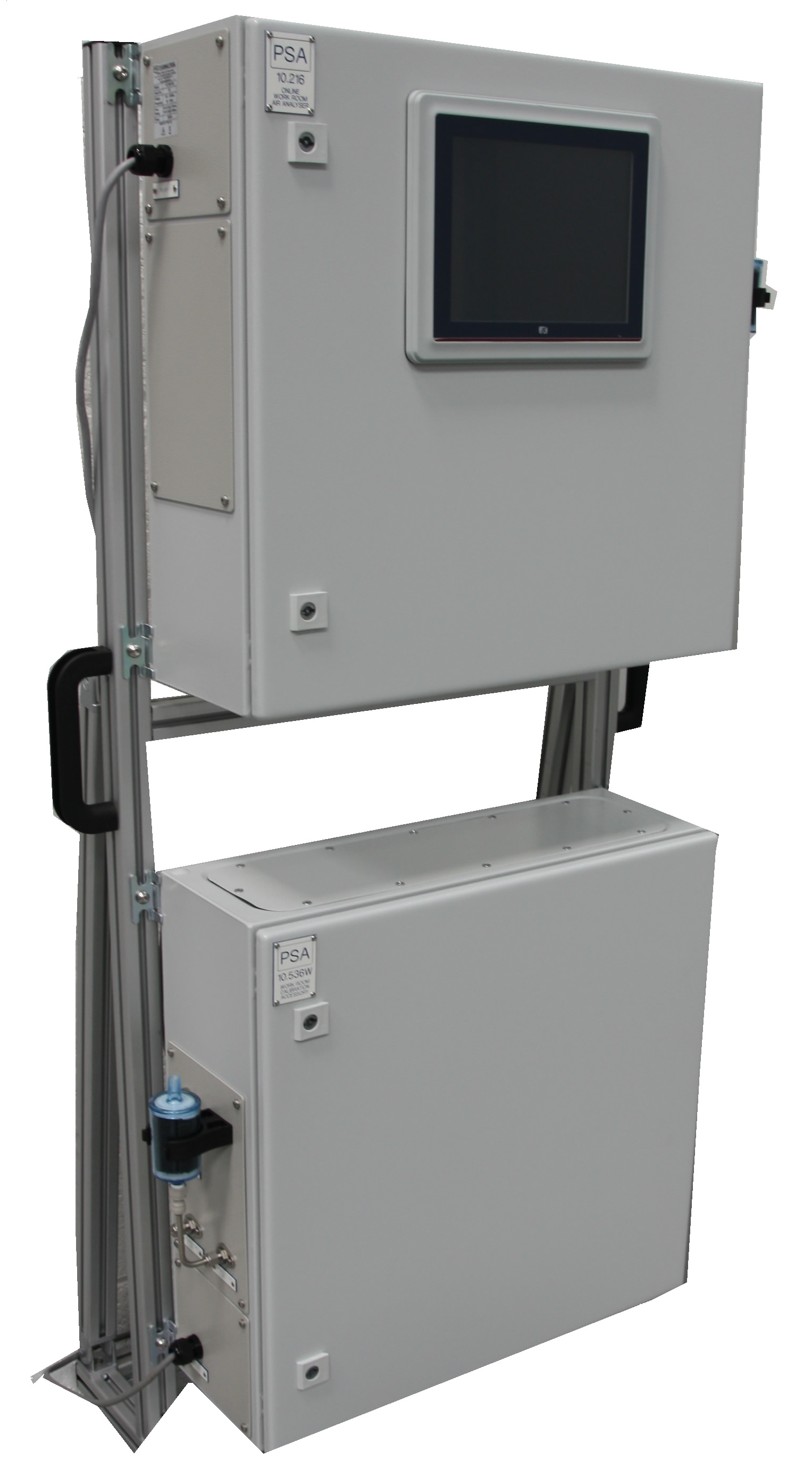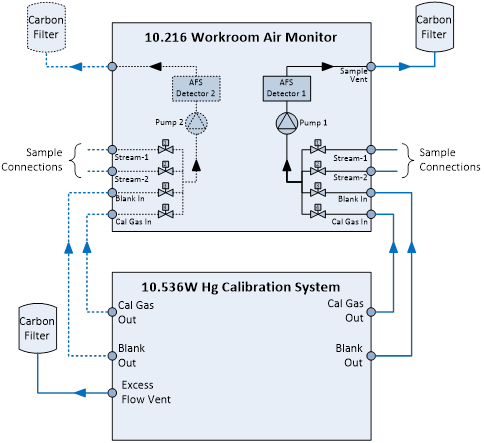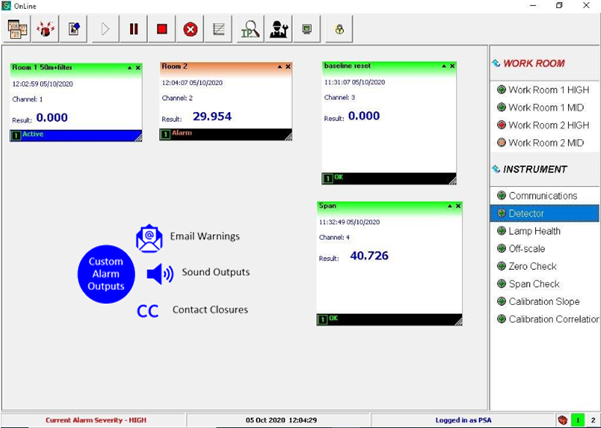10.216 - MERCURY IN WORK ROOM AIR
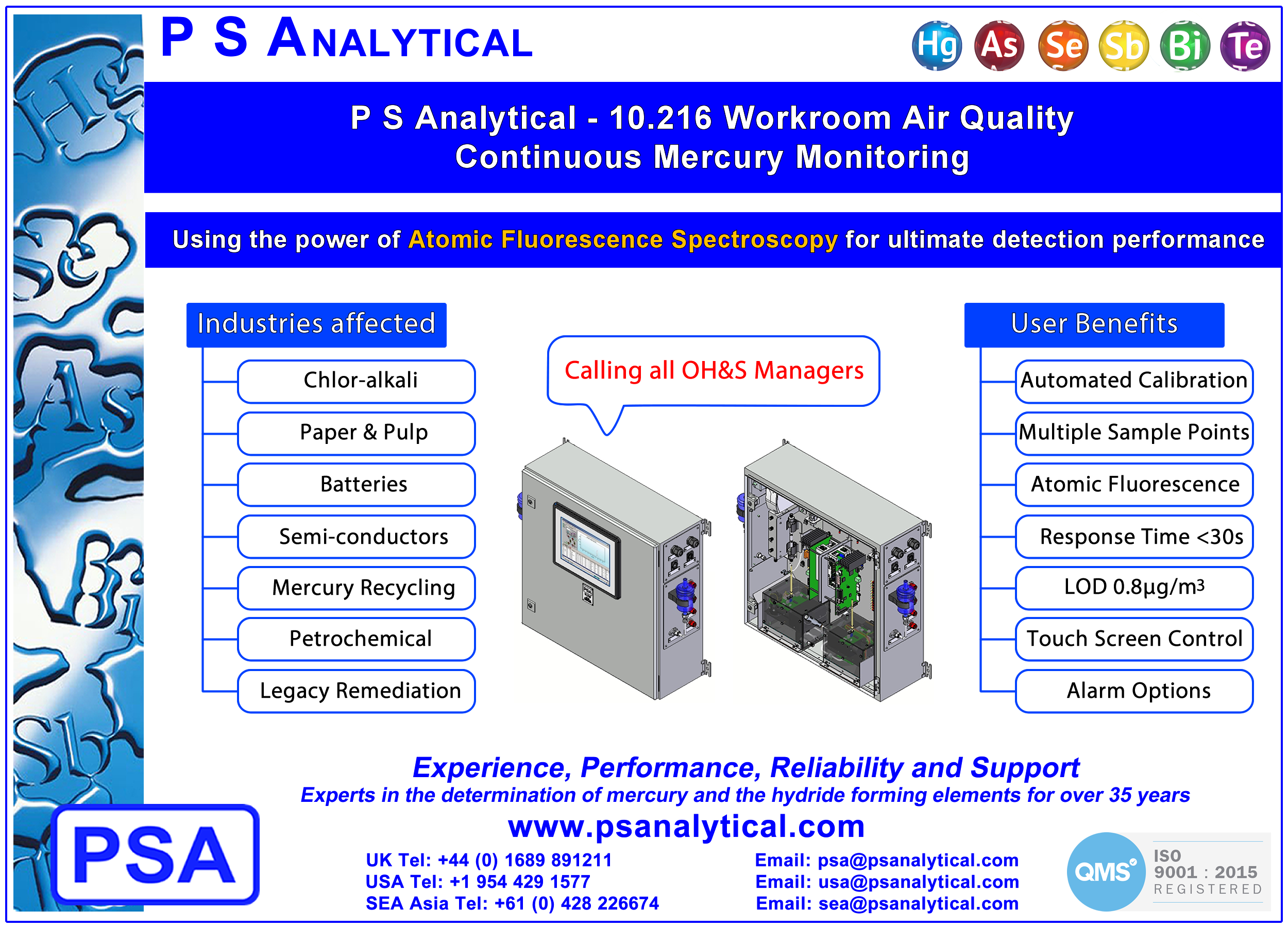
Mercury in the WorkplaceElemental mercury (Hg0) has a significant vapour pressure, even at low temperatures the vapour can exist in workroom air. The Hg vapour present in the workroom may be breathed in together with the air and can cause harm or illness to workers. The health effects that can be caused by inhaling mercury depend on how much mercury vapour you breathe in and how long you are exposed to the vapours. Industries which use mercury for manufacturing / as part of a process are more at risk to mercury exposure. Some industries where mercury is used or may be present are included in the infographic above. Mercury use is not limited to these areas, and exist in many other industries, such as in dentistry, where mercury amalgams are commonly used. Monitoring these air impurities in the workplace is an important part of the assessment of risks to health. Companies should ensure that exposure of workers to air impurities is regularly monitored and that their exposure levels are below the relevant Occupational Exposure Limits (OELs). OELs for mercury vary depending on the regulatory authority and the type of exposure. The table below gives example limits applicable to gas-phase elemental and inorganic mercury. |
||
 |
||
System OverviewThe 10.216 analyser is specifically designed to monitor the mercury concentration in workroom air. The system features a touchscreen PC built into the system for ease of use by an operator, with accommodation for remote access if the user requires. Up to two atomic fluorescence spectrometers can be placed into the analysis cabinet, increasing the sampling points available. Atomic fluorescence offers both excellent sensitivity and linearity and is ideal for monitoring applications. Some system specifications can be found below. Rapid Sample AnalysisSample gases are continuously pulled through the sampling lines to ensure the analysis of a representative sample while minimising the analysis period of the instrument. One sample stream is selected at a time for the accurate determination of mercury concentration. Sample streams are automatically run and can be easily selected on the instrument main page. The main page also shows calibration information, alarms and a history of results. Automatic System Checks and CalibrationThe 10.536W and 10.532W Mercury Vapour Generator accessories can generate a known concentration of mercury in a gas. Saturated mercury vapour is diluted, and the output concentration automatically calculated in the software. The generated gas can be used to check the calibration of the instrument and ensure validity of the results. The system can also automatically be recalibrated on a schedule decided by the user. The on-board calibration and check system allows for constant instrument operation with no downtime. Customisable SoftwareThe system is supplied with the P S Analytical C210S007 Online software package as standard. This gives the administrator complete flexibility over system control. Parameters such as stream selection, analysis frequency, maintenance scheduling can all be controlled by the end user. The admin can limit the control of the instrument to other operators by introducing a multi-tier login system. The software records all results and can generate reports which can be printed for easy record keeping or exported to excel for data analysis. The report includes visual data such as trend graphs to provide a quick summary of the collected data. Alarm Systems and OutputsThe configured alarms allow for minimal operator intervention and saves time for all users. As standard the PSA 10.216 analyser comes with 4-20mA outputs and 4 relays (contact closures) for alarms. Additional 4-20mA and contact closures and digital outputs can be easily added, as well as MODBUS RTU, RS 232, OPC Server and OPC Client. Information RequestFor more detailed information on the system, output options and software possibilities, please fill out an information request form here. |
||


